#Lee Pil Mo
Photo




Kdrama: Emergency Couple (2014)
What did i just see ??🤨🤐😳 | Emergency couple 💑 | The eth helens
Watch this video on Youtube: https://www.youtube.com/shorts/dXF_UNnXKU0
#Emergency Couple#응급남녀#Eunggeubnamnyeo#tvN#2014#Emergency Man and Woman#119 Couple#Song Ji Hyo#Choi Jin Hyuk#최진혁#Lee Pil Mo#Choi Yeo Jin#youtube#korean drama#kdrama#shorts#short video
11 notes
·
View notes
Photo

"I'm not divorcing you": Favorite married stars: "Goodbye to the November ghost story!"
Source: k-star-holic.blogspot.com
0 notes
Text
South Korean Government Cliques and the Unification Church Through the 70s and 80s
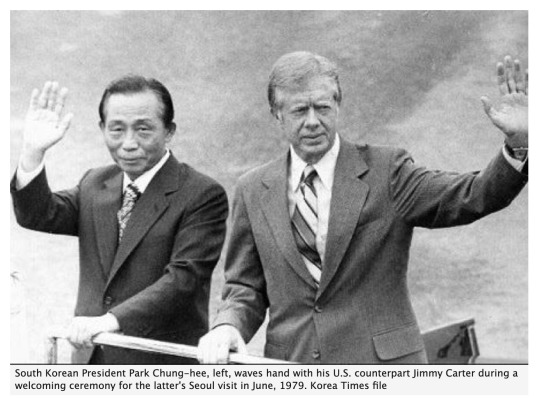
Moon’s organization has always had a complicated relationship with the South Korean government, despite the consistent mutual support throughout the decades. Their relationship was shaped by the political and social environment in South Korea, especially in the aftermath of the 1961 military coup led by General Park Chung Hee. The newly established Korean government was fragmented and divided, with various cliques vying for power and influence. The government was concerned about maintaining stability in the aftermath of the 1961 military coup and was wary of any potential threats to its power, including foreign influence. Moon’s relationship with the government largely reflected the politicking between these cliques, in their government, in the KCIA, and the military.
On the Economic Clique under Park Chung Hee
The economic clique was one of the several power groups that shaped South Korean politics during the presidency of Park Chung-hee (1961-1979). This group consisted of influential business leaders and entrepreneurs who were closely connected to the government and had a significant impact on the country's economic policies. They played a major role in the country's rapid economic development from a poor, agrarian nation, with a large peasant base, to a modern, industrial economy integrated into the capitalist-imperialist system.
Park had a close relationship with a number of figures in the economic clique, and within this clique there were sub-groups or factions of business leaders and entrepreneurs who had shared interests, goals, and close relationships with one another. These sub-groups were often based on common business interests or geographic proximity, and they often worked together to advance their shared interests and goals.
As for Korea Life Insurance's Soon-Mo Choi, he was a prominent member of the economic clique and was closely connected to the government. He was a successful businessman who built Korea Life Insurance into one of the largest insurance companies in South Korea, and he was known for his close ties to President Park and his administration. Choi’s wife, daughters, and other members of his family, joined the Unification Church. This includes Annie Choi, mother of Sam Pak, an “illegitimate” son of Sun Myung Moon who was raised by Bo Hi Pak.
Soon-Mo Choi was a member of the "chaebol" (large conglomerate) group within the economic clique, which consisted of the country's largest and most powerful business conglomerates. He used his influence to shape economic policies in ways that favored his business interests, and he often benefited from government contracts, subsidies, and other forms of support. He was also involved in shaping the country's financial sector and played a major role in the development of the Korean capital market.
In the early years of Park's presidency, the economic clique played a major role in the implementation of the government's economic policies, which were designed to promote rapid industrialization and economic growth. The government pursued a strategy of import substitution industrialization, which involved encouraging the development of domestic industries by protecting them from foreign competition. This was accomplished through a combination of high tariffs, government subsidies, and other forms of support.
The economic clique also benefited from the government's heavy investment in infrastructure, which was aimed at creating a favorable environment for business and investment. The government invested heavily in the construction of roads, ports, and other transportation infrastructure, as well as in the development of electricity and water systems. This infrastructure helped to create a favorable business environment, and it allowed the country's industries to grow and expand.
As the country's economy grew, so did the influence of the economic clique, becoming major players in the country's finance and banking sectors. Many of the policies this clique pushed on the Park administration were not in the best interest of the country as a whole, but instead served various segments of the tight-knit bourgeois compradors of Korea. Their struggles for influence and control had significant consequences for the country's stability and democracy.
Under Park Chung Hee, the military cliques and economic cliques were especially close, working in coordination.
On the Military Clique under Park Chung Hee
The military clique was made up of high-ranking military officers who were involved in power struggles and political maneuvering. It has been said that tensions between these cliques developed over Park’s administration, and became especially apparent after Park’s death and during Chun Doo-hwan’s seizure of power.
During the Park Chung Hee era in South Korea (1961-1979), the military was a powerful and influential institution, with the very close support of the United States and their military apparatuses. There were several cliques or factions within the military that held different political views and interests. These cliques often had different ideas about the direction of the country and the role of the military in politics and governance, and their political differences and rivalries lead to tensions and conflicts within the military and government.
There were several major subgroups within the Military Clique that had conflicting interests and ideas.
The "General's League" or "Generals Club" was made up of high-ranking military officials who were supportive of Park Chung Hee and his authoritarian regime. This group emerged in the mid to late 60s, with the goal of promoting the military’s influence over the country as well with the explicit aim of counterbalancing the power of the Korean Central Intelligence Agency (KCIA), seeing the KCIA as potentially subordinating their influence and power. These military leaders believed that the military was the only institution that could provide stability and security for the country, and they were fiercely loyal to Park Chung-hee. They were also wary of the United States’ influence on the KCIA. Park Chung Hee’s older brother Chung-bae was a prominent leader of this faction. The General's League began to lose some of its influence and power in the late 1970s, following the assassination of Park Chung Hee in 1979. The group was also implicated in a number of corruption scandals and other controversies, which damaged its reputation and weakened its hold on power, gradually fading away as a cohesive and influential entity in the 1980s. Even in the General's League, there was tension between its younger and older members. Chun Doo-hwan was one of the more prominent members of the younger faction and was known for his ambitious personality and aggressive approach to politics. He was also a key figure in the coup d'état that took place after Park's assassination, which brought him to power. Chun was often at odds with the older members of the General's League, who viewed him as a brash upstart. There were also ideological differences between the two factions, with the older members of the league emphasizing the importance of maintaining stability and order, while the younger members were more focused on implementing reforms and modernizing the country. Many of Chun's allies from the General's League's younger faction came to power during his administration.
The "Young Turks" arose in the late 1960s as a response to widespread public dissatisfaction with the corruption and authoritarianism of Park's regime. Park had been a close ally to some of their leaders prior to the consolidation of this faction, as they spearheaded economic reforms that aligned with Park’s own political vision. They were made up of younger, more progressive military officials who were critical of the existing political system. They were often at odds with the older, more conservative members of the military and the government, including the General’s Club and the Mountain Faction, who were quick to name many of these figures to be communists or somehow aligned with North korea. The Young Turks sought to increase civilian control over the military, and they sought a professional, merit-based military that would be free from political interference. They broadly advocated for greater political participation and transparency and for the implementation of social and economic reforms to address the country's growing inequality and poverty. Many of its members had studied abroad and were exposed to new ideas regarding democracy and human rights. Its most progressive proponents were influenced by the growing student and labor movements in South Korea. Park ended up cracking down on these members, arresting several leading figures.
The "Mountain Faction" and the Hanahoe faction were composed of military officials, graduates of Korea Military Academy. They were often more conservative and nationalistic than the other military cliques, and they both believed in a strong military presence in the country. Many of its members were veterans of the Korean War, and they saw themselves as defenders of the country's sovereignty and security. They were closely aligned with the National Defense Corps, anti-communist paramilitary groups. (The NDC organization was initially made up of volunteers, but later expanded to include conscripts who were drafted into service. These NDC members received basic military training and were provided with weapons and other equipment. They were frequently used to quell protests and demonstrations, and were involved in a numerous clashes with students and activists.) Mountain Faction played a key role in Park's government with many of its members serving in high-ranking positions in the military and the government. They were known for their strong opposition to leftist and socialist movements, as well as their support for traditional Korean values and culture. Though the Mountain Faction and the General's League had many of the same interests, there were different leading figures, leading to some minor disagreements about policies and military actions. Though adamant supporters of Park, some of their members played key roles in his assassination.
On the Intelligence Clique under Park Chung Hee
The intelligence faction had a lot of overlap with the military faction, with Kim Jong-pil as a main player throughout the decades. As previously mentioned, there were constant tensions with the military clique because of the KCIA’s growing influence over politics, society, and the military. Kim Jong-pil was a prominent member of this clique through the decades.
It was Kim Jong-pil who, in 1962, under the newly reigning Park Chung Hee, recruited young and ambitious professors, journalists, and bureaucrats for indoctrination by the CIA. This training center "secretly instructed organizers for the capital area in April and May and those for various provincial and local levels in June and July," and that by October 1962, an "underground organization" had been launched to recruit members "on a large scale through methodical screening by the central secretariat in Seoul and numerous provincial and local secretariats." This was the nucleus of the pro-military, pro-US Democratic Republican Party. In 1962, according to a CIA report, Kim was also responsible for the alleged reorganization of the Unification Church, which was done to make the UC a more effective tool of South Korea propaganda and political efforts.
Many members of the military clique saw how the KCIA was beginning to control politics in the early 60s, including in the formation of the Democratic Republican party, contributing to their growing wariness of the KCIA. Though Kim had a strong relationship with a number of members of the military, he was seen by many as directly being involved in the KCIA’s constant intervention in politics.
Like the other cliques, the intelligence clique had its own cliques, or sub-groups.
The Kim Jong-pil clique was led by Kim Jong-pil, who was a key figure in the formation of the KCIA and served as its director from 1961 to 1973. Kim and his followers were known for their anti-communist, hawkish views and their close relationship with President Park Chung-hee. Though Kim did not have a military background, this intelligence clique had the most connections with the military, and some have claimed this was also a military clique due to the involvement of a number of military figures.
The Lee Hu-rak clique was led by Lee Hu-rak, who was a senior official within the KCIA and had a strong influence over the agency's operations. Lee was known for his intelligence gathering abilities and his ability to manage complex operations. He was seen as a pragmatic and moderate figure within the KCIA, and was known for his willingness to work with other factions and groups within the government. Lee and his followers were known for their more moderate views and their support for political and economic reform. The Lee Hu-rak faction was made up of senior officials within the KCIA as well as politicians and businessmen who supported Lee's vision of reform. Unlike some of the other factions in South Korea at the time, the Lee Hu-rak faction did not have a strong ideological agenda. Rather, they were focused on modernizing the country's political and economic systems and promoting stability and development. Though there were anti-communist sentiments in this clique, it was not often as prioritized or emphasized in their work compared to the other cliques. This faction was especially concerned with government corruption, seeking to hold politicians accountable and create more oversight of government agencies. They were also known advocates of freedom of speech. This clique may have been more moderate but was still adamantly pro-US.
The Kim Hyong-wook clique was led by Kim Hyong-wook, who was a senior official within the KCIA and had a significant impact on the agency's operations. Kim and his followers were known for their support for his conservative views. They shared many of the same views of the Kim Jong-pil clique, and often cooperated with each other. The Kim Jong-pil clique was largely composed of military officers who had been trained in counterinsurgency and intelligence operations, and were more focused on maintaining internal security and suppressing dissent, particularly from leftist groups. The Kim Hyong-wook clique’s leadership was more varied, with officials that included lawyers, economists, and technocrats. The Kim Hyong-wook clique was seen as more focused on economic development and modernizing the country's infrastructure.
Kim Jong-pil and Park Chung-hee were close political allies during the early years of Park's presidency, and Kim served as the director of the Korean Central Intelligence Agency (KCIA) from 1961 to 1973. However, despite their close relationship, the two eventually had a falling out. Kim was seen as too close to the United States and too deferential to American interests, which clashed with Park's more nationalist and independent-minded approach to foreign relations. There were also reports of personal animosity between the two men, with Kim feeling increasingly marginalized and disrespected by Park's inner circle.
Another factor was Kim's ambition to become the country's next president. Kim saw himself as a potential successor to Park, but Park was not willing to give up power and did not support Kim's presidential aspirations.
The Unification Church’s Relationship to the Cliques and Korean Government
The relationship between the Moon Organization and the South Korean government was dynamic and constantly changing. The organization's close relationship with Kim Jong Pil and the positions held by Bo Hi Pak, Steve Kim, and Bud Han in the Korean government provided continuous access to influential officials. For example, Steve Kim accompanied Kim Jong Pil on a tour of the United States in 1962, where Kim Jong Pil held a secret meeting with Unification Church members in California, promising to give the movement political support in Korea.
From the 70s into the 80s, many Korean military and political leaders, including those in Chun and Park’s inner-circle, were connected to the World Anti-Communist League, which had received a majority of its funding from the Unification Church.
The Korean government granted favors to the Moon Organization, and the organization provided assistance to ROK officials for the furtherance of government policies or state propaganda. This includes supporting Moon’s efforts to develop his weapon manufacturing, which were then used by South Korean soldiers in the Vietnam War. Their mutually supportive relationship can also be seen in the link between the Moon organization and the government through the Korean Cultural And Freedom Foundation (KCFF). The Korean Cultural Freedom Foundation (KCFF) served as an important link between the UC and the South Korean government from the early 1960s into the 70s. The earliest U.S. government reports linking the KCFF with the Moon Organization were in late 1964 and early 1965, when Bo Hi Pak, who was identified as the "real leader" of KCFF, resigned from the South Korean army to work full-time for the foundation. The three Kim Jong Pil aides—Bud Han, Steve Kim, and Mickey Kim—who were active in the early days of the KCFF all went on to assume prominent roles in the government, such as ambassadors and high ranking officials of the KCIA.
Though the Moon organization has always had some sense of a relationship with the ROK Government, there have been tense moments, including some level of state repression.
The 1974 crackdown on the Unification Church, leading to raids and fines on a number of UC companies, is an example of this, and these incidents foreshadowed what would happen in 1979. In 1974, a number of UC leaders were accused of tax evasion, bribery, and fraud, and a number of leaders were sent abroad by the UC to flee legal problems. This period put some financial strain on the UC, as their assets were frozen and their weapon manufacturing, which brought in much of their income, was halted. At this point, though, the UC began to develop greater income from the businesses and fundraising efforts led by Japanese and American members. 1974 was a year that shook Moon, and led him to flee Korea. He felt the lifting of support from the government, and therefore saw himself at greater risk of attack. Some have alleged that this crackdown was pushed by Soon-mo Choi, who swore himself an enemy of Moon. Moon himself was scared of Choi, and was frightened that his connections to powerful people may lead to his own death. He therefore decided to travel to the United States, where he believed he would be able to continue to promote the teachings of the Unification Church and expand its influence, with the protection of the U.S. government, a growing partner of his organization.
The 1974 crackdown was motivated by more than a personal grudge but a mixture of domestic political concerns, as the government saw UC members’ loyalty to Moon as greater than their patriotism as well as growing concern over the UC’s relationship to the FBI and CIA. The UC's souring reputation in the USA, with their connections with the KCIA being uncovered and the media reporting on their brainwashing and kidnapping of youth, also played a major role in the crackdown.
After the assassination of Park Chung Hee in 1979, the Unification Church faced increased scrutiny and repression from the government. The church was accused of being involved in political activities and of having undue influence over the government, and a number of church leaders were arrested. The government also revoked the church's tax-exempt status and banned its members from serving in the military. This was part of a larger wave of repression against political and religious groups, as the government sought to maintain stability in the aftermath of Park's death.
The UC continued to grow in Korea at this time, with much of its membership coming from student and anti-communist organizations, as well as other social and cultural projects. These initiatives helped to further raise the profile of the Unification Church and reinforce its reputation as a positive force in society. The Unification Church's relationship with the government remained strained throughout the late 1970s and into the 1980s, facing significant restrictions on its activities.
Chun Doo-hwan, like many of the Republic of Korea’s leading figures, had a tense and complicated relationship with the Unification Church. He welcomed their support through the 80s, and their efforts to frame him as a democratic leader. With the ousting of Marcos in the Philippines, the UC began to push the idea that Chun was nothing like Marcos through their media outlets, despite having positive relations with Marcos in the past. Chun was allegedly encouraged by his connections in the Unification Church to develop a strong relationship with Marcos’ successor, Corazon Aquino, to substantiate this idea.
Church members organized demonstrations in support of Chun throughout the US during his visit, often getting into brawls with leftist and anti-imperialist demonstrators. Chun had mixed feelings on this support, afraid of the bad publicity the Moonies may draw.
Chun lost in the 1987 presidential election, and had a public trial beginning in March 1996. By December 16, he was sentenced to life in prison for
Treason
Leading an insurrection
Conspiracy to commit insurrection
Taking part in an insurrection
Illegal troop movement orders
Dereliction of duty during martial law
Murder of superior officers
Attempted murder of superior officers
Murder of subordinate troops
Leading a rebellion
Conspiracy to commit rebellion
Taking part in a rebellion
Murder for the purpose of rebellion
Bribery
and a fine in the amount of ₩220 billion. His sentence was commuted by President Kim young-sam, who initially led the legal struggle against him.
The Unification Church distanced themselves from Chun after his presidential loss.
Following Chun’s administration and the fall of the Soviet Union, the Unification Church continued to involve itself in Korean politics, but focused more of its energy on its real estate and businesses.
Tongil Heavy Industries, their weapons manufacturer, has transformed into S&T Motiv, the top supplier of weapons to the South Korean military and, since Duterte’s presidency, the units of the Philippine military and police that are hunting and murdering alleged communists.
More reading:
Articles and essays online
The Political Role of the Korean Military: The Making of the Third Republic by John Kie-Chiang Oh
The Military in the Politics of South Korea, 1961-1966: The Role of Political Institution-Building by Soo Young Auh
Panel Told Seoul Used Followers Of Sun Myung Moon for Protests (New York Times, 1978)
August 11, 1974: Moon on Nixon, the CIA, and anti-communism - here on WIOTM
The Military Revolution and the Third and Fourth Republics
Books
The Park Chung Hee Era: The Transformation of South Korea edited by Byung-Kook Kim and Ezra F. Vogel
The Republic Of Korea: Economic Transformation And Social Change by David Steinberg
The Two Koreas: A Contemporary History by Don Oberdorfer and Robert Carlin
South Korea in the Fast Lane: Economic Development and Capital Formation by Young-Iob Chung
Park Chung Hee and Modern Korea: The Roots of Militarism, 1866–1945 by Carter J. Eckert
#south korea#republic of korea#government#moonies#unification church#counterinsurgency#politics#korean politics#unification church in south korea#unification church in korea#church history#unification church history#chun doo-hwan#kim jong-pil#lee hu-rak#choi soon-mo#kcff
0 notes
Text
Especial KRP — Sobrenomes Coreanos
Cansado de Lee? Kim? Seo? Song? Choi? Hwang? Park? Abaixo do "Read More" você vai encontrar alguns sobrenomes mais incomuns que pode usar em seus personagens coreanos.

Ah, A (아 - A)
Ae (애 - É)
Ban, Bahn, Van, Vahn, Pan, Pahn (반 - Ban)
Beon, Bun, Buhn, Veon, Vun, Vuhn (번 - Bón)
Beom, Bum, Buhm, Veom, Vum, Vuhm (범 - Bóm)
Bo, Vo (보 - Bô)
Bok, Vok (복 - Bôc)
Bong, Vong (봉 - Bông)
Boo, Bu, Voo, Vu (부 - Bú)
Bi, Vi, Bee, Vee (비 - Bi)
Bin, Been, Bean, Vin, Veen, Vean (빈 - Bin)
Bing, Beeng, Ving, Veeng (빙 - Bing)
Da (다 - Dá)
Dam (담 - Dam)
Dan (단 - Dan)
Dang (당 - Dang)
Dae, Dai (대 - Dé)
Dok, Dock (독 - Dôc)
Dokgo, Dokko (독고 - Docô)
Don (돈 - Dôn)
Dong (동 - Dông)
Dongbang (동방 - Dôngbâng)
Deung (등 - Dûng)
Deungjeong, Deungjung (등정 - Dûngdjóng)
Eogeum, Uhgeum, Ugeum (어금 - Ógûm)
Eun (은 - Ûn)
Eum (음 - Ûm)
Hak, Hahk (학 - Rác)
Hae (해 - Ré)
Hyeong, Hyung, Hyoung (형 - Rióng)
Ho, Hoh (호 - Rô)
Hwa, Hwah (화 - Ruá)
Hwangmok (황목 - Ruangmôk)
Hwangbo (황보 - Ruangbô)
Hoo, Hu (후 - Ru)
Ja, Jah (자 - Já)
Jeom, Jum (점 - Djóm)
Je, Jeh (제 - Djê)
Jegal, Jekal (제갈 - Djegál)
Jeo, Juh (저 - Djó)
Jong (종 - Djông)
Jwa, Joa, Jua (좌 - Djuá)
Jeung (증 - Jûng)
Kangjeon, Kangjun, Gangjeon, Gangjun (강전 - Gangdjón)
Ka, Ga (가 - Ga)
Kal, Gal (갈 - Gal)
Kam, Gam (감)
Kan, Gan (간 - Gan)
Kae, Gae (개 - Gué)
Kyun, Kyeon, Kyoun, Gyun, Gyeon, Gyoun (견 - Guión)
Kyung, Kyeong, Kyoung, Gyung, Gyeong, Gyoung (경 - Guióng)
Kye, Gye (계 - Guiê)
Kok, Gok (곡 - Gôc)
Kwan, Gwan (관 - Guân)
Kwok, Gwok (궉 - Guóc)
Kyo, Gyo (교 - Guiô)
Kuk, Guk, Kook, Gook, Kuck, Guck (국 - Guc)
Kung, Koong, Gung, Goong (궁 - Gung)
Kwok, Gwok, Kweok, Gweok (궉 - Guóc)
Keun, Geun (근 - Gûn)
Keum, Geum (금 - Gûm)
Ki, Gi, Kee, Gee (기 - Gui)
Kil, Gil (길 - Guil)
Lin, In, Rin, Leen, Een, Reen (인 - In)
Man, Mahn (만 - Man)
Mangjeol, Mangjul (망절 - Mangdjól)
Mae (매 - Mé)
Maeng (맹 - Méng)
Myung, Myeong, Myoung (명 - Mióng)
Mo, Moh (모 - Mô)
Mok, Mock (목 - Môc)
Myo (묘 - Miô)
Moo, Mu (무 - Mu)
Mubon, Moobon (무본 - Mubôn)
Muk, Muck, Mook, Moock (묵 - Muc)
Mi, Mee (미 - Mi)
Nan (난 - Nan)
Namgoong, Namgung, Namkoong, Namkung (남궁 - Namgung)
Nang (낭 - Nang)
Nae (내 - Né)
Noi, Nwe (뇌 - Nê)
Ok, Ock (옥 - Ôc)
On, Ohn (온 - Ôn)
Ong (옹 - Ông)
Pan, Pahn (판 - Pan)
Paeng (팽 - Péng)
Pyeon, Pyun, Pyuhn (편 - Pión)
Pyeong, Pyung, Pyuhng (평 - Pióng)
Po, Poh (포 - Pô)
Pyo (표 - Piô)
Pung, Poong (풍 - Pung)
Pi, Pee (피 - Pi)
Pil, Fil, Peel, Feel (필 - Pil)
Ra, La, Rah, Lah (라 - Lá)
Ran, Lan (란 - Lan)
Rang, Lang (랑 - Lang)
Ryeo, Ryuh, Lyeo, Lyuh (려 - Lió)
Roe, Loe, Roi, Loi, Rwe, Lwe (뢰 - Lê)
Sa, Sah (사 - Sá)
Sakong, Sagong (사공 - Sagông)
San, Sahn (산 - San)
Sam, Sahm (삼 - Sam)
Sang, Sahng (상 - Sang)
Seomun, Seomoon, Suhmun, Suhmoon, Sumun, Sumoon (서문 - Sómún)
Seonu, Seonwu, Seonwoo, Seonoo, Sunu, Sunwu, Sunwoo, Sunoo (선우 - Sónú)
Seob, Sub, Seop, Sup, Suhb, Suhp (섭 - Sób)
Sobong (소봉 - Sobông)
Soo, Su (수 - Su)
Sun, Soon (순 - Sun)
Seung (승 - Sûng)
Si, Shi, Xi, See, Shee, Xee (시 - Xi)
Tak, Tahk (탁 - Tác)
Tan, Tahn (탄 - Tan)
Tang, Tahng (탕 - Táng)
Tae (태 - Té)
Uh, Eo, Eoh (어 - Ó)
Wan, Wahn (완 - Uán)
Wang, Wahng (왕 - Uáng)
Wun, Un, Woon, Oon (운 - Un)
Wi (위 - Uí)
Ya, Yah (야 - Iá)
Yeop, Yeob, Yup, Yub, Yuhp, Yuhb (엽 - Iób)
Yeong, Young, Yung (영 - Ióng)
Ye, Yeh (예 - Iê)
Yo (요 - Iô)
Yong (용 - Iông)
Yook, Yuk (육 - Iúk)
28 notes
·
View notes
Text
The Many Faces of Ji Chang Wook
Sleeping Beauty (2008) - Jin Seo

You Stole My Heart (2008) - Lee Phillip
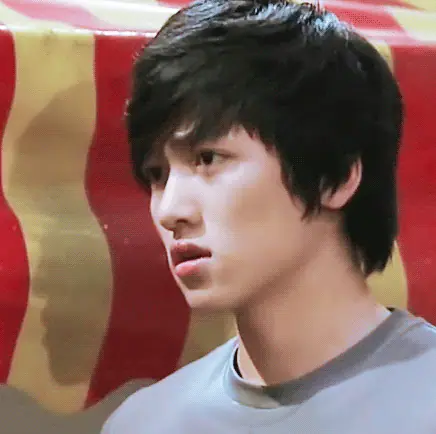
My Two perfect sons (2009) - Song Mi-poong

Hero (2009) - Park Jun-hyeong

Death Bell 2: Bloody Camp (2010) - Soo-il

Smile Again (2010-2011) - Dong hae

Warrior Baek Dong soo (2011) - Baek Dong-soo

Bachelor's Vegetable Store (2011-2012) - Han Tae-yang

Five fingers (2012) - Yoo In-ha

Empress Ki (2013) - Toghon Temur
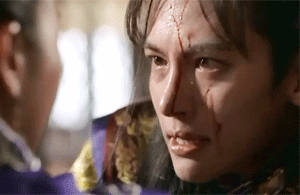
Healer (2014) - Seo Jung-hoo / Park Bong-soo / Healer

The Whirlwind Girl 2 (2016) - Chang An

THE K2 (2016) - Kim Je-ha / K2

Fabricated city (2017) - Kwon Yoo
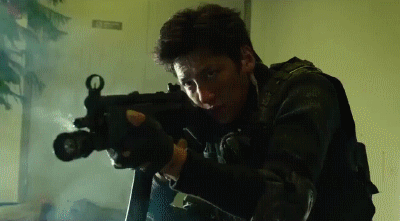
Suspicious Partner (2017) - Noh Ji-wook
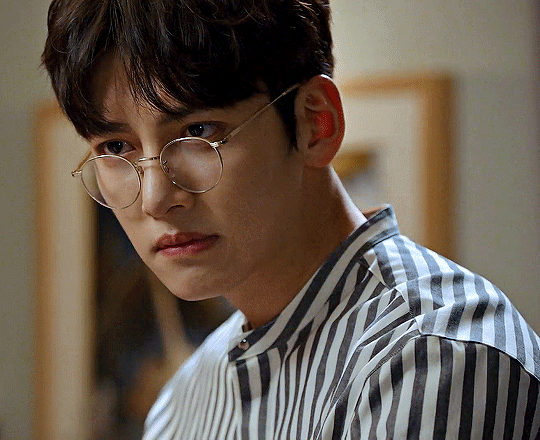
Melting Me Softly (2019) - Ma Dong-chan

Backstreet Rookie (2020) - Choi Dae-hyun

Lovestruck in the City (2020) - Park Jae-won

Hard Hit (2021) - Jinwoo

The Sound of Magic (2022) - Lee Eul

If You Wish Upon Me (2022) - Yoon Gyeo-rye

The Worst of Evil (2023) - Park Joon-mo
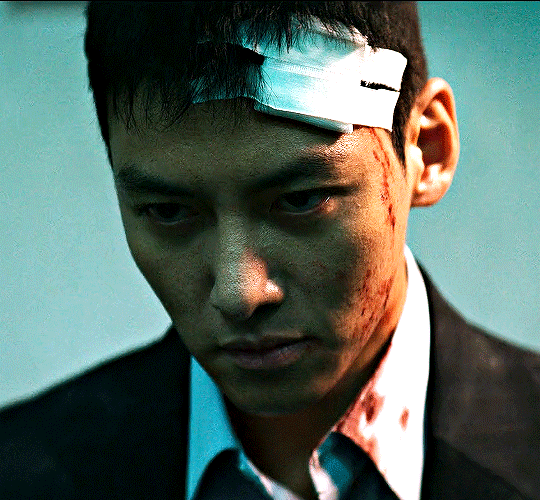
Welcome to Samdal-ri (2023-2024) - Cho Yong-pil
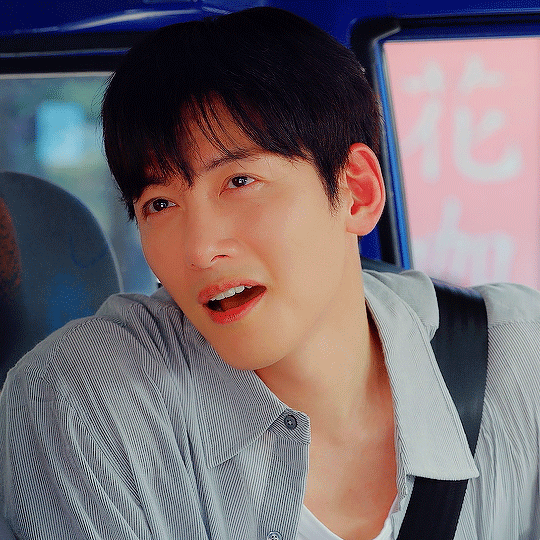
Revolver (2024) - Andy

Queen Woo (2024) - Go Nam-mu / Gogukcheon of Goguryeo

16 notes
·
View notes
Text
To finish off the year, here's my TOP 23 Ships from dramas I watched in 2023
1. Kim Doo Shik ♥ Lee Mi Hyun
Moving

2. Cha Jin Woo ♥ Jung Mo Eun
Tell Me That You Love Me

3. Seo Do Guk ♥ Han Yi Joo
Perfect Marriage Revenge

4. Xin Qi ♥ Min Hui
The Love You Give Me (C-Drama)

5. Choi Kang Ho ♥ Lee Mi Joo
The Good Bad Mother
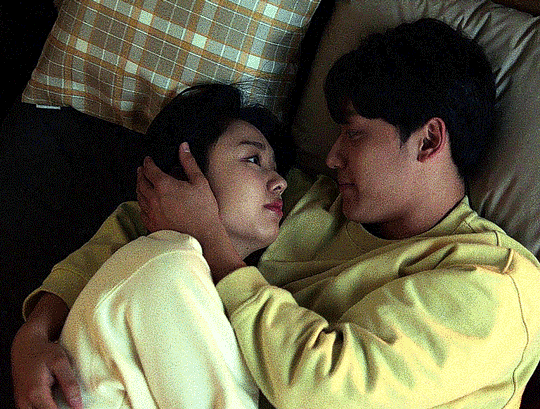
6. Dongfang Qincang ♥ Xiao Lanhua
Love Between Fairy and Devil (C-Drama)
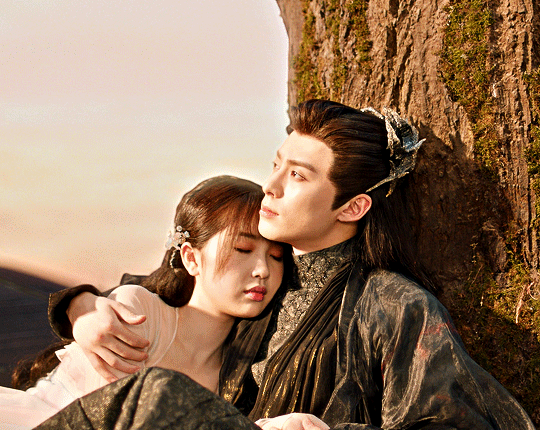
7. Jung Ki Ho ♥ Seo Mok Ha
Castaway Diva

8. Moon Jang Yeol ♥ Bong Ye Bun
Behind Your Touch

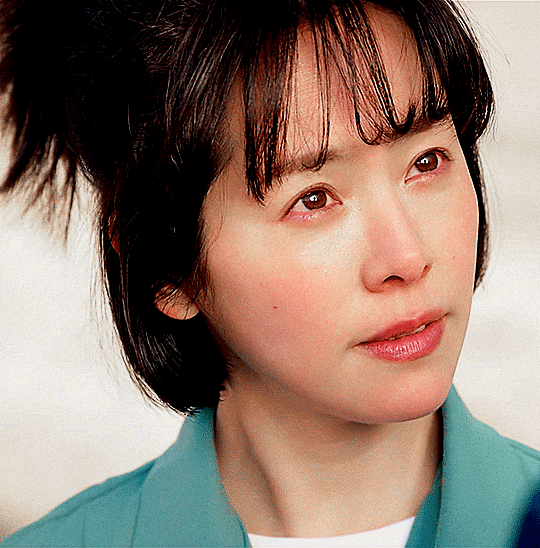
9. Gu Won ♥ Cheon Sa Rang
King the Land

10. Cho Yong Pil ♥ Cho Sam Dal
Welcome to Samdalri
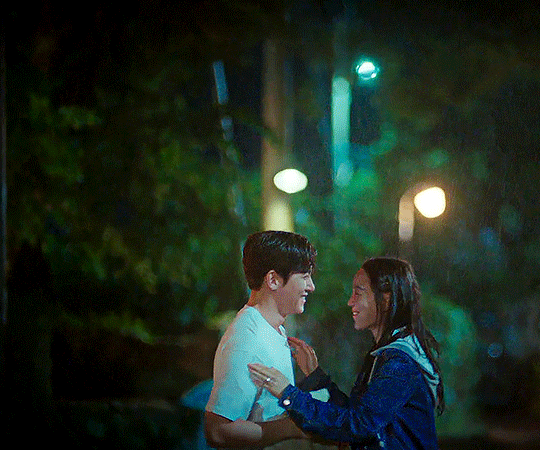
11. Yoo So Joon ♥ Song Ma Rin
Tomorrow With You
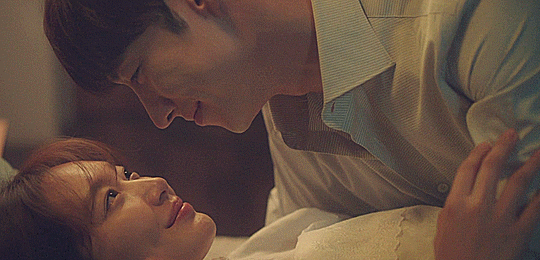
12. Kang Hee Shik ♥ Kang Nam Soon
Strong Girl Namsoon

13. Dong Go Yun ♥ Jung Da Eun
Daily Dose of Sunshine

14. Gong Tae Gyeong ♥ Oh Yeon Doo
The Real Has Come

15. Jang Seon Gyeol ♥ Gil Oh Sol
Clean With Passion for Now

16. Cha Min ♥ Cho Se Yeon
Abyss

17. Heo Joon Jae ♥ Shim Cheong
Legend of the Blue Sea
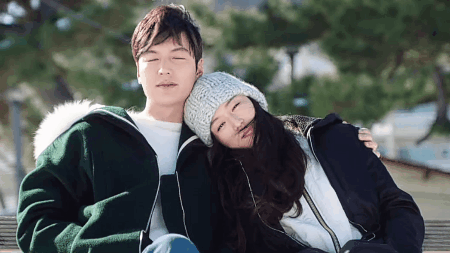
18. Kim Tae Hee ♥ Baek Dong Joo
May I Help You
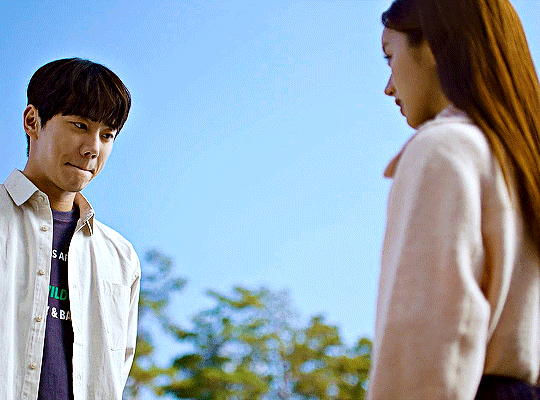
19. Jung Gu Won ♥ Do Do Hee
My Demon

20. Nam Si Heon ♥ Han Jun Hee
A Time Called You

21. Jang Tae Sang ♥ Yoon Chae Ok
Gyeongseong Creature
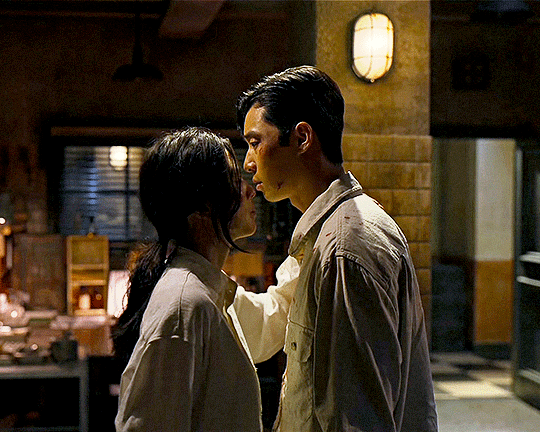
22. Lee Kang ♥ Moon Cha Young
Chocolate

23. Cha Eun Ho ♥ Kang Dan Hee
Romance is a Bonus Book
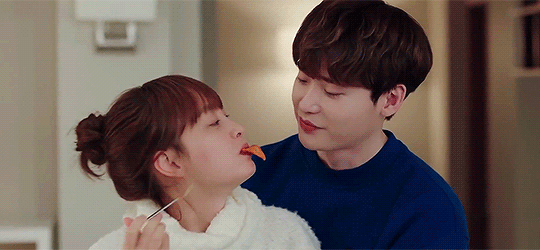
21 notes
·
View notes
Text
INBOX STATUS MEANINGS
OPEN: open for requests, asks, and everything else!
L-OPEN: open for everything, but responses will be quite delayed.
R-OPEN: open for everything, but I don't reccomend sending anything, as I might not reply to it for a long time.
CLOSED: please don't send stuff
----------——
Heya! Zie here! I write for the fandom and ships below (assume I write for the character if their name is in a ship):
The Uncanny Counter:
Ji Cheong-Sin x Reader (AKA: adventures of Yeong-Nae[1], [2], [3], [4])
Ji Cheong-Sin x evil spirit!Reader
Ms. Chu x Chairman Choi
Ms. Chu & Ga Mo Tak
Ga Mo Tak & So Mun
Ga Mo Tak x Reader or OC
Hwang Pil Gwang/Gelly (possibly)
All Of Us Are Dead:
Lee Cheong-San x Reader or Nam On-Jo
Lee Su-Hyeok x Reader or Choi Nam-Ra
Yoon Gwi-Nam x Reader or OC
#ji cheong sin#the uncanny counter#uncanny counter season 1#ji cheong sin x reader#adventures of yeong nae#ga mo tak#mo tak#chu mae ok#ms chu#choi jang mul#chairman choi#so mun#so mun x reader#intro post#all of us are dead#aouad x reader#aouad#yoon gwi nam
20 notes
·
View notes
Text
lee pil-mo is pretty and all but his character so does not deserve that fine woman
#she and sin-yu's friend should have an affair then she should divorce her loserass husband#destined with you#kdrama
12 notes
·
View notes
Text

The Universe's Star //Romance Full of Life//Queen of Ring // KDRAMA DİZİ YORUMU
UYARI : Yazılar genel olarak spoiler içerebilir. İçermeyedebilir.
Drama Series: The Universe's Star (literal title)
Hangul: 우주의 별이
Director: Kim Ji-Hyun
Writer: Kim Ji-Hyun
Cast: Suho, Ji-Woo, Shin Hyun-Soo, Na Hae-Ryung, Ko Kyu-Pil, Ko Kyu-Pil
Drama: Romance Full of Life (literal title)
Hangul: 생동성 연애
Director: Park Sang-Hoon
Writer: Park Eun-Young, Park Hee-Kwon
Cast: Yoon Si-Yoon, Jo Soo-Hyang, Kang Ki-Young, Kim Min-Soo, Jang Hee-Ryung, Woo Hyeon
Drama: Queen of Ring (literal title)
Hangul: 반지의 여왕
Director: Kwon Sung-Chan
Writer: Kim A-Jung
Cast: Kim Seul-Gi, Ahn Hyo-Seop, Yoon So-Hee, Lee Tae-Sun
Date: 2017
Language: Korean
Country: South Korea
Dizi 10’ar dakikalık kısa bölümlerden oluşuyor. 3 farklı hikaye olarak seri yapılmış. Yine bir okul ödevi tadında kısacık eğlencelik minnak diziler. Her birinde tanıdığımız, sevdiğimiz oyuncuları görmemiz mümkün.
The Universe's Star;
Woo-Joo yetenekli bir şarkıcı-söz yazarıdır ve Byul-Yi ise bir ölüm meleğidir. Hayranı olduğu çocuğun hayatını alması için gönderilince aralarındaki romantizm dizinin konusu olur. Benim yorumum üçlemenin en pasif ve silik hikayesi buydu. Hikaye anlatmak istediği duyguları anlatabilecek kadar uzun olmadığı için izleyiciye pek bir şey geçmedi. Ama çok da ciddi bakmamak lazım tabi.
Romance Full of Life;
Çok uzun süredir polis memur sınavlarına hazırlanan So In-Sung 8 kez başarısız olmuştur. Buna rağmen hiç neşesini kaybetmemeye çalışır. Kız arkadaşı Wang So-Ra ise artık onunda ayaklarının yere bastığını görmek ister. Aynı zamanda o da kendi içinde zor zamanlar geçirirken anlık bir kararla ilişkilerini bitirir. Dünyası yıkılan In-Sung tesadüfen gördüğü "Hayat Dolu Deney" isimli bir ilaç deneyine katılarak para kazanacağını düşünür.
Bu hikayenin konusu ilginçti. Tamamen mükemmel insana dönüştüren bu hap ile yapay bir popülerlik kazanan karakterimizin aslında ne istediğini keşfetmesini anlatıyordu.
Queen of Ring;
Benim seriye başlama nedenim ve en eğlendiğim hikaye ise buydu. Aileden gelen genetik bir çirkinliğe sahip kısa boylu bir kız olan Mo Nan-Hee bir gün annesinin sırrını keşfeder. Ailesinde nesillerdir ailenin kadınlarına miras kalan bir yüzük vardır. Yüzüğü sevdiğin kişinin sana takmasını sağladığında karşındaki kişi seni görmek istediği ideal güzellikte görmesini sağlıyordur. Babası gündüz işteyken yüzüğü annesinden ödünce alan kızımız okulda sevdiği erkeğe dünyanın en güzel kızı olarak görünür. Ancak yakışıklı çocuğumuz Park Se-Gun yüzüğün büyüsü ile yıllar önce karşılaşıp beğendiği bir kızın yüzünü görmektedir. İşte o kız bizim Nan-Hee’nin arkadaşıdır ve aynı okula kaydını yaptırınca işler karışır.
Hikayeler böyleydi. Üçü de yumuşak, kısa, keyifli zaman geçirten tatlı dizilerdi. Çok uzun konuşmaya gerek olduğunu düşünmüyorum. Sıkıldığınızda açıp 10dk bakıp kapatabileceğiniz, küçük bir kaçamak olarak düşünebilirsiniz.
Raven Melus
BAŞKA NELER VAR ?
FOTOĞRAFLAR
#The Universe's Star#Romance Full of Life#Queen of Ring#kdrama#yorum#inceleme#dizi#eleştiri#Suho#Ji-Woo#Shin Hyun-Soo#Na Hae-Ryung#Ko Kyu-Pil#Yoon Si-Yoon#Jo Soo-Hyang#Kang Ki-Young#Kim Min-Soo#Jang Hee-Ryung#Woo Hyeon#Kim Seul-Gi#Ahn Hyo-Seop#Yoon So-Hee#Lee Tae-Sun
0 notes
Text
Destined with You
Destined with You (Serie 2023)
#WiHaJoon #KimRoWoon #JoBoAh #LeeBongRyun #ParkKyungHye #LeePilMo
Mehr auf:
Serie / 戀愛不可抗力 / Un amor predestinado Jahr: 2023- (August)
Genre: Drama / Romantik
Hauptrollen: Wi Ha-joon, Kim Ro Woon, Jo Bo-ah, Lee Bong-ryun, Park Kyung-hye, Lee Pil-mo, Yura, Hye-Young Jung, Bong-sik Hyun, Mi-Ram, Park Jung Eon, Jung Sae Rom …
Serienbeschreibung: Beamtin Hong-Jo (Jo Bo-Ah) ist wunderschön, doch hinter der selbstbewussten Fassade führt sie ein Leben in Einsamkeit. Kein…

View On WordPress
0 notes
Photo








#the king's affection#kdramaedit#kdramanetwork#yeonmo#kdramadaily#dailyasiandramas#bblecher#chewieblog#perioddramaedit#userstream#kdrama#park eun bin#han chae ah#choi myung bin#lee pil mo#**
204 notes
·
View notes
Photo





Kdrama: Emergency Couple (2014)
Seeing your girlfriendwith someone else🥺😝| Emergency couple 💑 | Kamar teri mastani🎵 | The Eth-Helens
Watch this video on Youtube: https://www.youtube.com/shorts/oR2CxLAv8Ds
#Emergency Couple#응급남녀#Eunggeubnamnyeo#tvN#Emergency Man and Woman#119 Couple#2014#Song Ji Hyo#Choi Jin Hyuk#Lee Pil Mo#Clara#Yoon Jong Hoon#Im Hyun Sung#Chun Min Hee#youtube#kdrama#korean drama#shorts#short video
2 notes
·
View notes
Photo

Lee Pil-mo ⁇ ⁇ ⁇ ⁇ ⁇ .............................................
#The Return of Superman#Seo Su-yeon#So Yoo-jin#Toho Co.#Ltd.#Song of Songs#Grandma's Boy#Hangul#Lee Pil-mo#Baro
0 notes
Photo

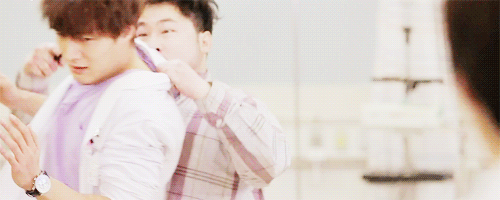

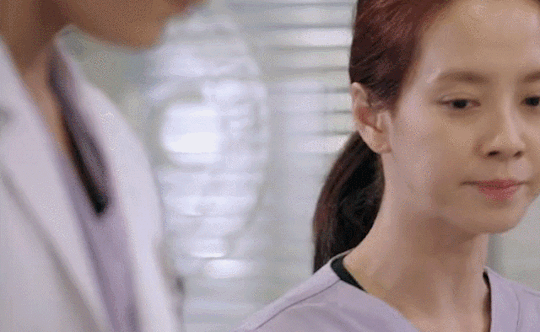

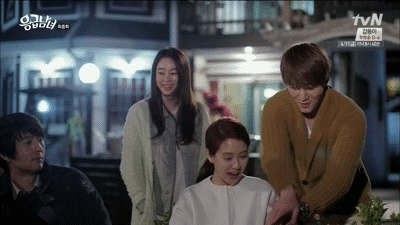
Emergency Couple moments
08.23.2022
#Emergency couple kdrama#emergency couple gifs#emergency couple gif#emergency couple#kdrama emergency couple#oh chang min#oh jin hee#han ah reum#choi jin hyuk#song ji hyo#lee clara#kdrama choi jin hyuk#lee pil mo#kdrama lee pil mo#kdrama song ji hyo#kdrama lee clara#clara#kdrama clara#kdrama scenes#kdrama funny#kdrama gif#kdrama gifs#kdrama headers#Kdrama love#kdrama layouts#kdrama edit#kdrama edits#kdrama icons#kdrama iconic#kdrama packs
6 notes
·
View notes
Text
The King's Affection

This 20 episode long series is a different kind of historical fiction involving royalty. Fraternal twins switching roles. The wrong sibling gets killed and the one who was supposed to have died becomes the king. It is a love story rather than a regular historical drama that focuses on the politics. In this series, politics become secondary to the love story which made this story refreshing in that sense. I liked all the characters surrounding Lee Hwi / Dami - they were loyal and loved her.
Conflicts felt realistic within the plot and coupe at the end left us with a new king, a man who had never wanted to be king but was the only choice after the others died. Lee Hyun, was Lee Hwi's cousin and the son of the king Lee Hwi's father had taken out of the throne. But Lee Hyun had never minded, he loved Lee Hwi and their friendship meant the world to him.
I liked the ending because it gives a happy ending to the couple and we see everyone else happy. And to see all the friends together in the end was nice.
It's a beautiful love story set in the Joseon Era and less bloody than usual historical fiction. I really liked it.
#the king's affection#Park Eun-Bin#Ro Woon#Nam Yoon-Soo#Choi Byung-Chan#Bae Yoon-Kyoung#Jung Chae-Yeon#Lee Pil Mo#Lee Il-Hwa#Kim Taek#Choi Myung-Bin#Ko Woo-Rim#Choi Ro-Woon#Kim Geon
3 notes
·
View notes
Photo










78 notes
·
View notes